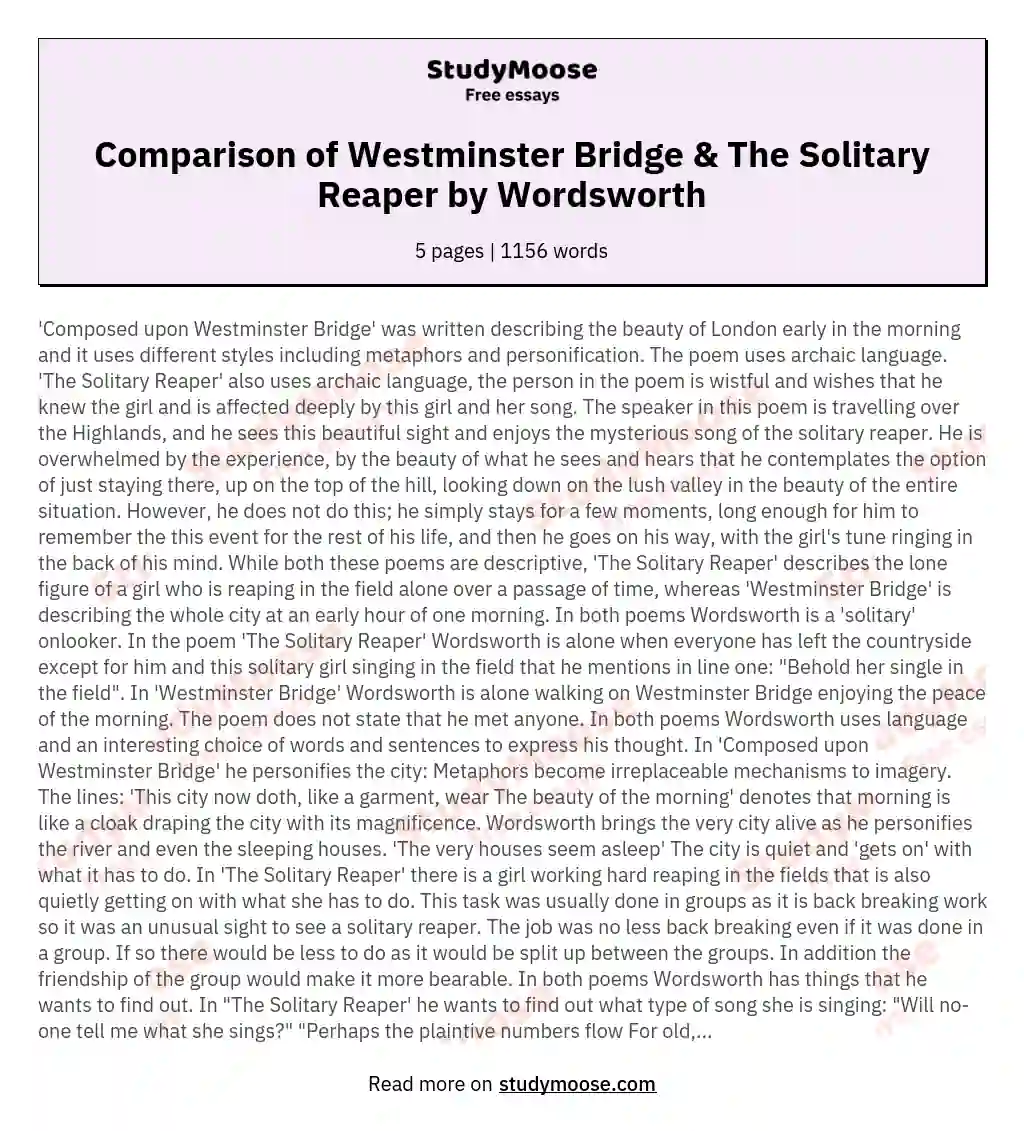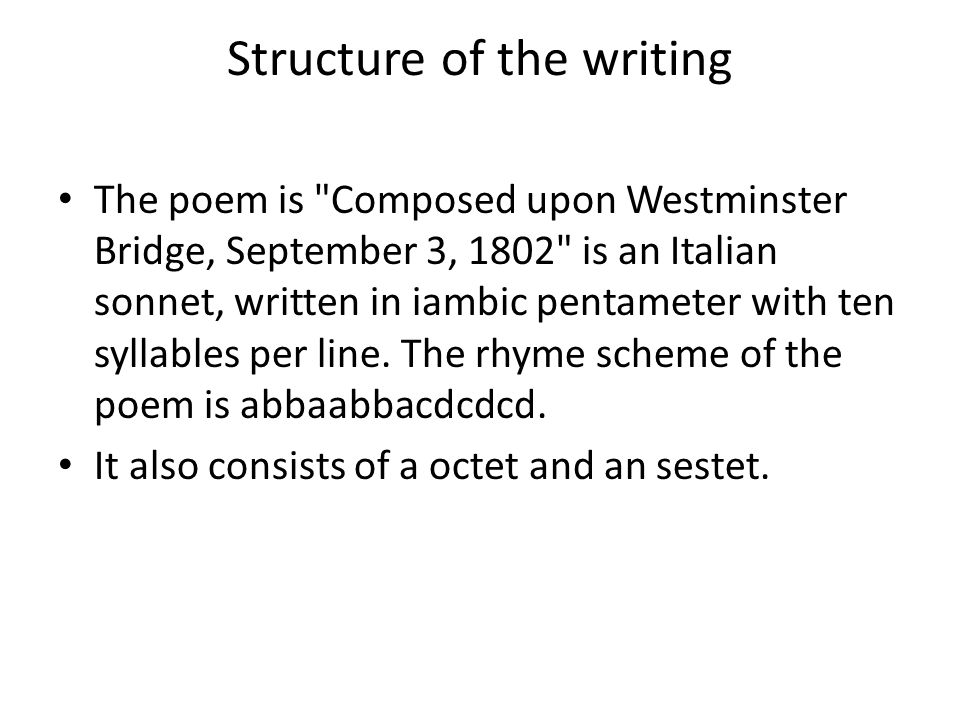"Composed upon Westminster Bridge, September 3, 1802" is a poem written by William Wordsworth that captures the beauty and majesty of London as seen from Westminster Bridge. The poem is written in sonnet form and is characterized by its vivid imagery and elegant language. In this essay, I will provide a line-by-line analysis of the poem, exploring its themes, language, and structure.
The poem begins with the line "Earth has not anything to show more fair," which sets the tone for the rest of the poem by highlighting the speaker's awe and admiration for the city of London. The phrase "Earth has not anything to show more fair" suggests that the speaker believes London to be the most beautiful place on earth.
The second line, "Dull would he be of soul who could pass by," suggests that only someone with a lack of emotion or sensitivity could ignore the beauty of London. This line further emphasizes the speaker's reverence for the city.
In the third line, "A sight so touching in its majesty," the speaker describes the city as both beautiful and grand. The word "touching" adds a sense of emotional depth to the description, suggesting that the speaker is moved by the sight of London.
The fourth line, "This City now doth, like a garment, wear," compares the city to a piece of clothing. The word "garment" suggests that the city is both practical and decorative, adding to the sense of grandeur and beauty that the speaker is describing.
The fifth line, "The beauty of the morning; silent, bare," describes the city as being quiet and empty, with the word "bare" adding to the sense of openness and clarity. The phrase "beauty of the morning" suggests that the speaker is seeing the city at dawn, when the light is soft and the city is at its most peaceful.
In the sixth line, "Ships, towers, domes, theaters, and temples lie," the speaker lists some of the prominent features of the city. The list includes both natural and man-made elements, highlighting the diversity and complexity of the city.
The seventh line, "Open unto the fields, and to the sky," describes the city as being open and expansive. The phrase "fields and sky" suggests that the city is connected to the natural world, and that it is not confined or restricted.
The eighth line, "All bright and glittering in the smokeless air," describes the city as being shiny and sparkling, with the word "smokeless" adding to the sense of cleanliness and clarity. This line further emphasizes the beauty and grandeur of the city.
The ninth line, "Never did sun more beautifully steep," describes the sunrise as being particularly beautiful. The word "steep" suggests that the sun is shining down on the city in a way that is both intense and warm.
The tenth line, "In his first splendor, valley, rock, or hill," describes the sun as shining on all parts of the city, including the valleys, rocks, and hills. This line further emphasizes the expansive nature of the city and the beauty of the sunrise.
The eleventh line, "Ne'er saw I, never felt, a calm so deep!" describes the speaker's sense of peace and tranquility. The word "calm" suggests that the speaker is feeling a sense of serenity and contentment, and the phrase "ne'er saw I, never felt" suggests that the speaker has never experienced a calm like this before.
The final line, "The river glideth at his own sweet will," describes the river as flowing smoothly and effortlessly.






